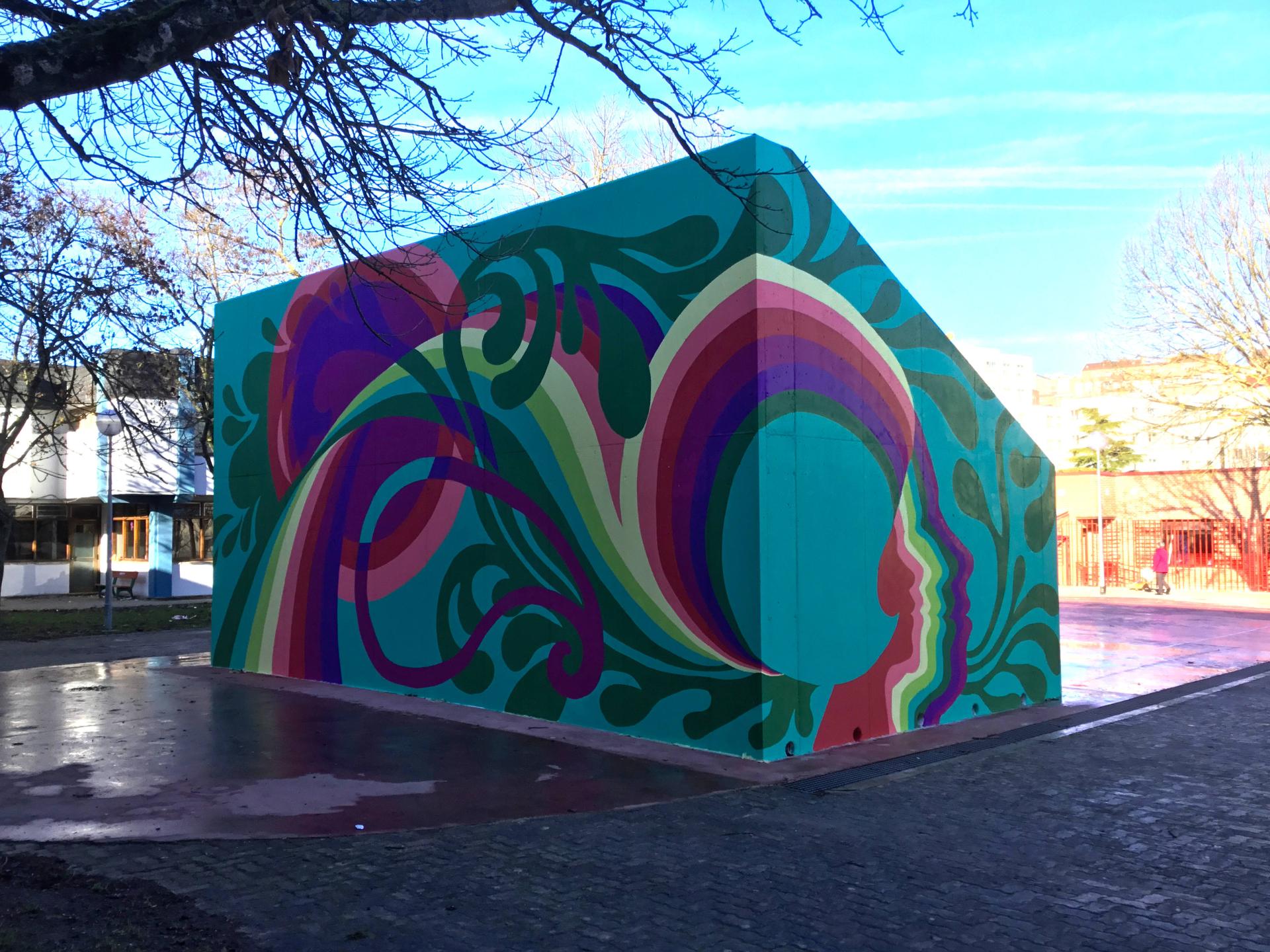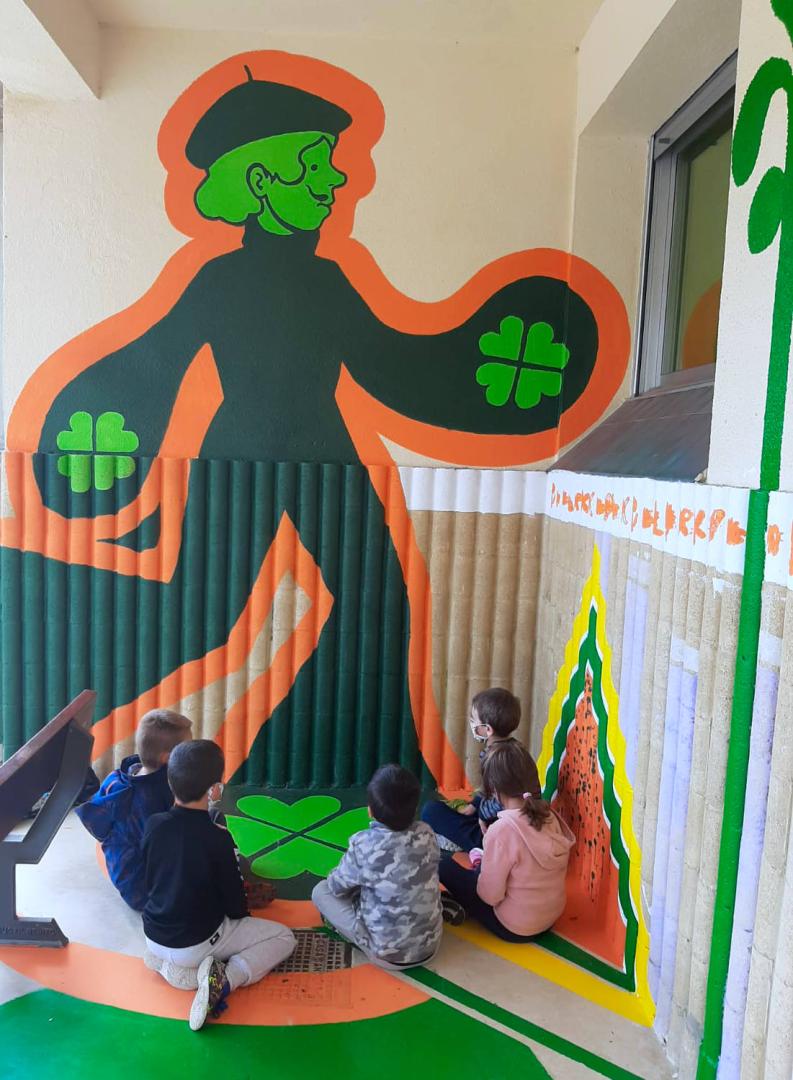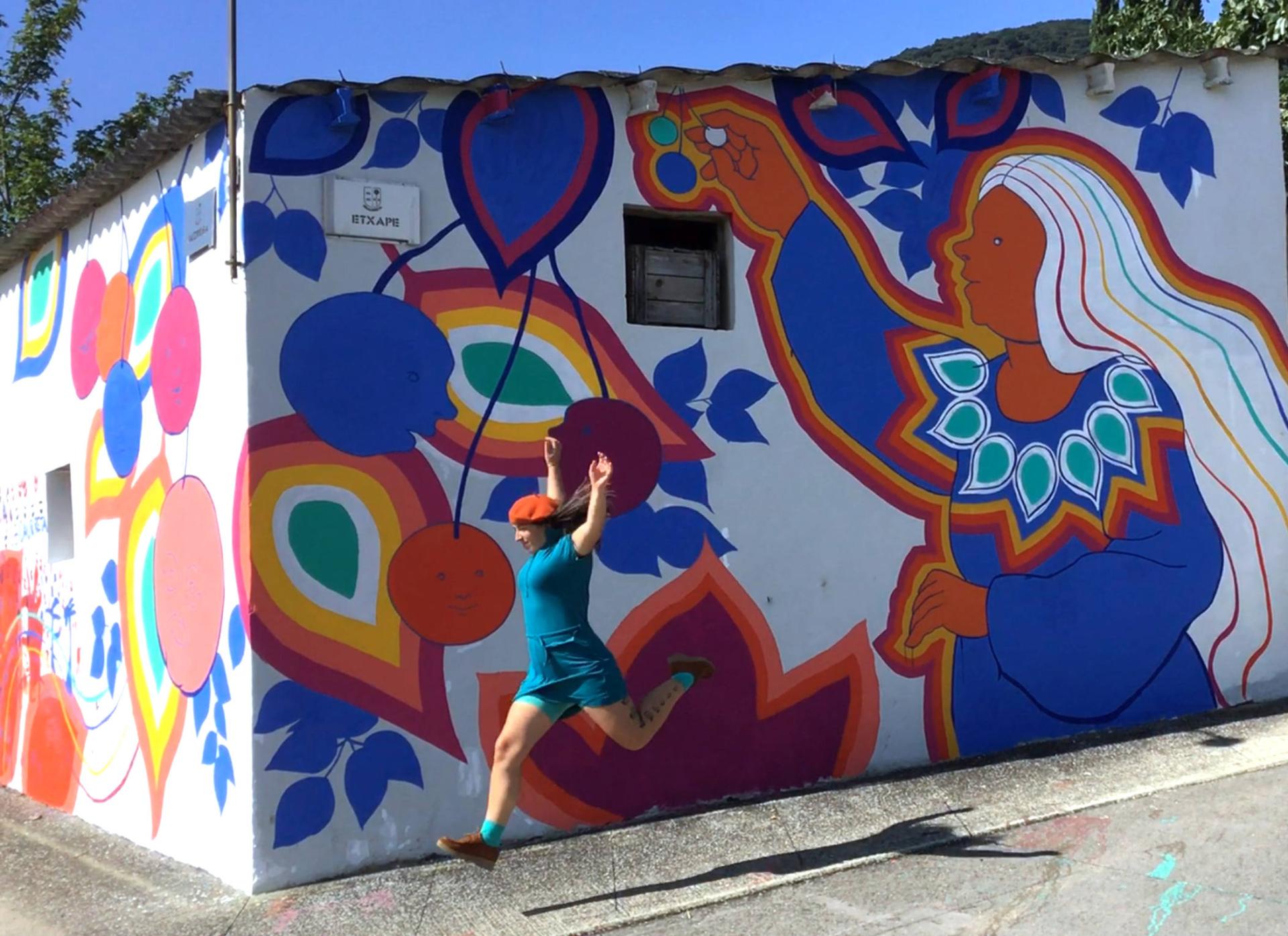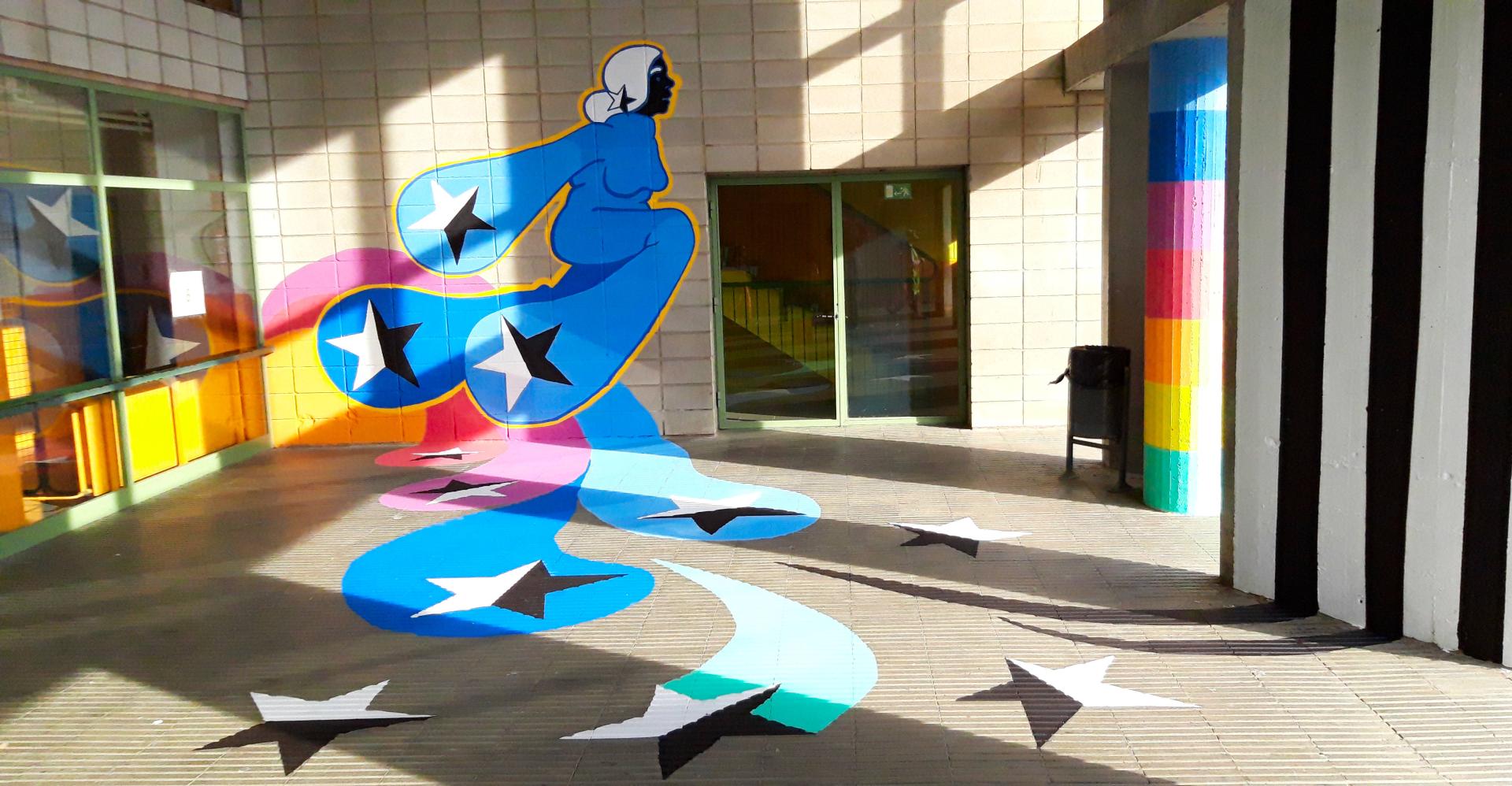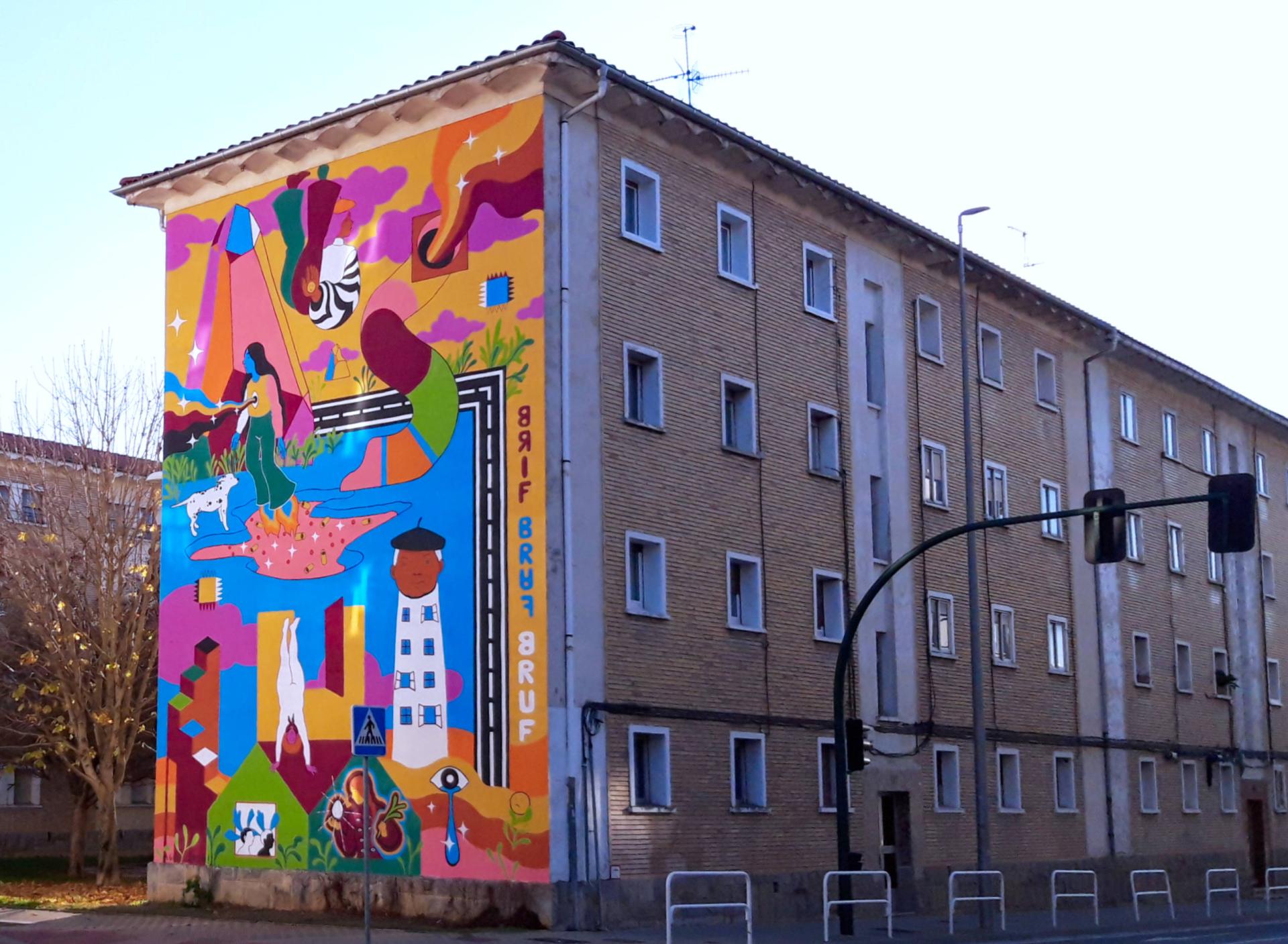Looking for expanded illustration
Basic information
Project Title
Full project title
Category
Project Description
When I talk about expanded illustration, I am referring to something which moves out on both a formal and a conceptual level, giving a storytelling that supports social inclusion through muralism in the urban context. Although I also develop my work in institutions traditionally dedicated to art, at the neighborhood level, where many people of different cultures live together, the practice of mural art can build a sustainable community with a sense of ownership of the space.
Project Region
EU Programme or fund
Description of the project
Summary
Looking for expanded illustration. Giving public space to our self-discovery narratives. Is a mural art project based in a transformational activities centered around arts and culture that help build social cohesion and develop a shared sense of ownership of the space.
Key objectives for sustainability
Through giving public space to our self-discovery narratives by mural art we can help balance the communities with the resources of their environment. In my experience as artist I have seen how the great visual impact of muralism satisfies the needs of the present generations without compromising the possibilities of the future in an economical and exciting way.
Besides, the use of ecological paints respects people and the environment. Today we can build large scale paintings with 0% aliphatic and aromatic solvents, 0% methyl ethyl ketoxime and 0% heavy metals. With a product that is easy to apply, odorless, very fast drying-repainting with professional finishes.
In a more social aspect, we can say that from the participatory processes as well as from the documentation on the ground prior to the design of the mural, the search for the representation of a common ideal is promoted. In every creative process, this common ideal will be transversally mediated by feminist and environmental perspectives that favor the integration of different cultures with their surroundings, eliminating class differences.
Key objectives for aesthetics and quality
This work starts from an approach to the life of the neighborhoods and towns, from the experimentation of the expanded field of illustration, as an image exposed to economic mechanisms of mass production. With a clear orientation towards the Superflat movement led by artists such as Murakami or Yositomo Nara, Looking for expanded illustration. Giving public space to our self-discovery narratives, aims to blur the boundaries between high art and popular graphics through relating the symbols integrated in the imaginary of my drawings with the provenance of a more self-referential genealogy inspired by the symbolic background of folklore and the history of the communities that surround the work. In general lines we can say that these murals are colorful, dynamic and optimistic.
Key objectives for inclusion
If we think about the differences in terms of normality (the normal is for human beings to be different), we can recognize in art a path of cognitive, emotional and spiritual development. In this sense, muralism as a resource for the transformation of spaces inhabited by communities and their diversity, allows us to implement participatory processes that help us build an inclusive collective identity. In the urban art interventions developed so far, the work system has developed in two different ways. On the one hand, in the cases that have been directly activated by the equality departments of the town councils, work has been done on specific issues that required a facilitation of a visual way. And on the other hand, as has been the case of the mural at the Brif Braf Bruf Children's Literature Festival that pays tribute to the Italian writer Gianni Rodari, we have worked with third-grade students for the collective elaboration of the design that later has been transferred to the wall in the neighborhood. Both in one process and the other, the issue of inclusion and critical reflection on the ideas of otherness have structured the work.
Results in relation to category
As we have commented previously, the process of working on a mural often implies time for the participatory workshop. Whether it is a previous workshop, with the aim of generating a collective mural idea or a post-design workshop, participating in the painting when the situation allows it, the mural generates a common sense of ownership of the space. In addition, the impact of the large-scale execution of the mural, becomes a cultural event during the days of execution, causing great expectation. Around the mural, a meeting point between neighbors is always generated. And many times, the mural can also be complemented by other simultaneous cultural events.
How Citizens benefit
The gathering around the mural provides the communities with a stop in the daily routine that is usually greeted with emotion. The mural helps citizens to look at the space they inhabit with a fresh and different gaze. The construction of images through symbols provides a space for collective reflection. Somehow the mural with its attractiveness generates unity, brings the neighborhood closer instead of distancing it. So much so that many times there are magical situations during the coexistence of the days of painting. For example, the case of a father, who, having lost his son to the pandemic, turned to the development of the mural, painting hand in hand with us. Over the days, we finally introduced a new symbol that was not contemplated in the design of the mural made with the school children but that symbolized the light of our new friend's son. Staying on the street painting allows you to be in contact with the people who walk through it. And in the best of cases, establish interpersonal relationships full of solidarity, admiration and mutual respect.
Innovative character
Although muralism as urban art is a very widespread practice around the world, mediation with communities and the contribution of an aesthetic marked by the experimentation of the expanded field of illustration, as an image exposed to economic mechanisms of mass production are the most innovative aspects of this project. With a clear orientation towards the Superflat movement led by artists such as Murakami or Yositomo Nara, this project aims to blur the boundaries between high art and popular graphics by relating the symbols integrated in the imaginary of my drawings with those from genealogies more self-referential of each community. Let's say that through mediation with the cohabitants, an image is generated that draws on the influences of animations and publications from the 60s in Technicolor until today. So the aesthetics of these murals is a bridge between the virtual world of flat images and vibrant colors that contrasts with the aesthetics of the concrete and everyday.

